
15311826613
Click to add WeChatSilver is an important precious metal and a strategic resource with a wide range of industrial uses and high economic value. It is an indispensable raw material in key areas such as high-end electronic equipment, aerospace, and national defense weapons. Pure silver raw materials are obtained through beneficiation. Common silver ore beneficiation methods mainly include flotation, gravity separation, cyanidation, etc. This article will introduce the silver ore gravity separation process in detail.
The general conventional silver ore beneficiation process is divided into three main stages, namely ore pretreatment, gravity separation and product processing.
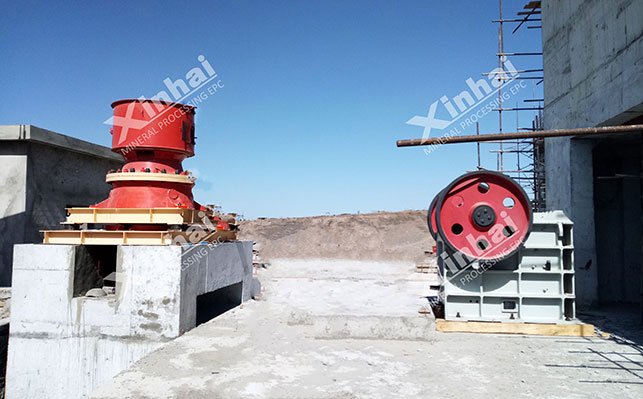
Crushing: The particle size of the mined silver ore is usually between 500-1500mm, and it needs to be refined through multi-stage crushing. Generally, jaw crushers are used for coarse crushing to reduce the ore size from the original ore size to 150-200mm; cone crushers are often used in the medium crushing stage, using the rotation of the eccentric sleeve to squeeze and bend the ore, and the discharge particle size can be controlled at 25-50mm; impact crushers or hammer crushers are used for fine crushing, and the ore is impacted by high-speed rotating hammers, and the particle size is finally refined to 10-25mm.
Screening: The crushed silver ore is graded according to the particle size so that the ore particle size entering the subsequent grinding, gravity separation, flotation and other operations meets the process requirements. Vibrating screens or circular vibrating screens are usually used to screen the crushed products. Qualified materials enter the next stage, and those that do not meet the particle size requirements are returned to the crusher for re-crushing until the product particle size is qualified. For silver ore, it is usually 20-40mm.
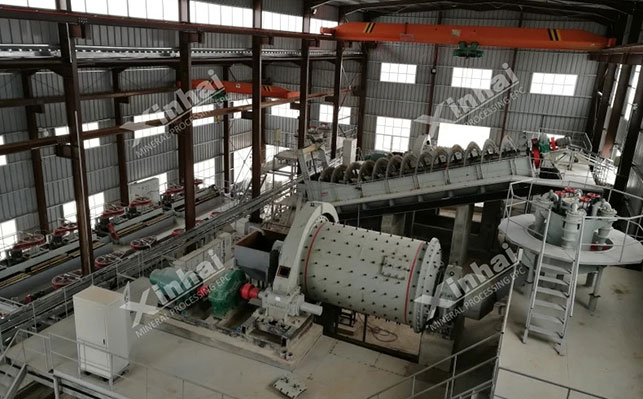
Grinding: It is the key process to achieve full separation of silver minerals and gangue. The ball mill is mainly used to grind the ore to -0.074mm particle size, accounting for 60%-80%. In actual operation, the grinding concentration (generally 65%-75%), steel ball ratio (coarse particle size steel balls account for 30%-40%) and speed (75%-85% of critical speed) need to be adjusted according to the hardness of the ore.
Classification: Hydrocyclones or spiral classifiers are often used. Hydrocyclones are often used in conjunction with grid ball mills to achieve coarse and fine particle separation by centrifugal force. The classification efficiency can reach 70%-80%, and the overflow particle size is controlled at -0.074mm, accounting for 60%-70%; spiral classifiers are often used in conjunction with overflow ball mills to achieve classification. The coarse particles are returned to the mill for re-grinding mainly through the rotation and lifting of the blades to ensure the uniformity of the particle size of the grinding product.
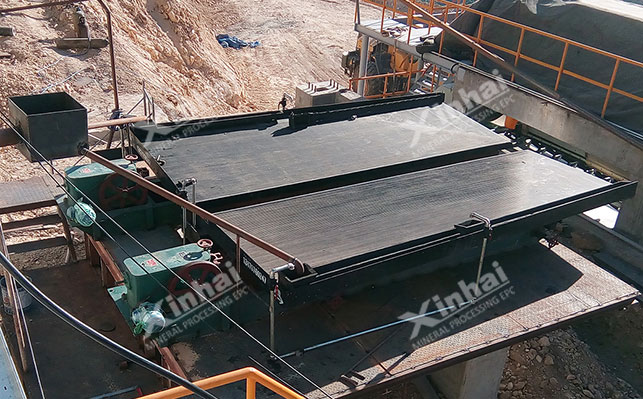
Shaking table separation is suitable for silver ore with a particle size of 0.03-2mm. It uses the differential movement of the bed surface and the lateral water flow to achieve density stratification. The bed slope is generally 1.5°-5°, the stroke is 8-25mm, and the stroke is 250-400 times/min. Under the action of water flow, the silver mineral particles with higher density (density of about 10.5g/cm³) settle quickly. Under the dual action of the lateral water flow and longitudinal vibration of the bed surface, they are discharged along the concentrate end of the bed surface; the gangue minerals (density 2.5-3.5g/cm³) move to the tailings end. By adjusting the parameters such as the height of the water trough and the ore feeding speed (0.5-2t/h), the grade of the silver concentrate can be increased by 3-5 times.
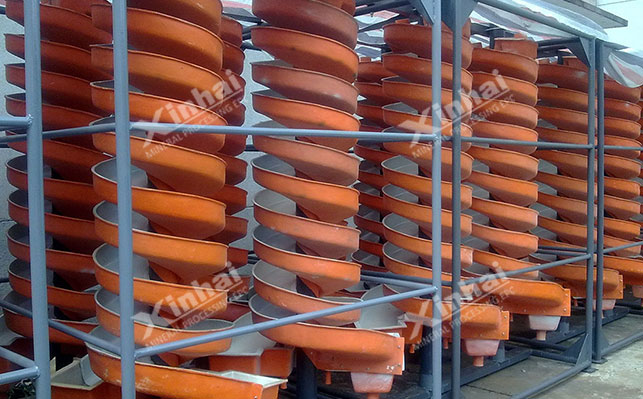
The spiral chute uses the synergistic effect of centrifugal force and gravity to separate 0.02-2mm particle size ores. The cross section of the spiral trough is parabolic. When the slurry flows in the trough, the silver minerals are close to the bottom of the trough due to their high density. Under the action of centrifugal force, they move downward along the inner side of the spiral line; the gangue minerals move outward. The equipment installation angle is generally 12°-18°, the slurry concentration is controlled at 25%-35%, and the processing capacity can reach 3-8t/h. This equipment is often combined with a shaking table to form a graded gravity separation system to carry out targeted recovery of ores of different particle sizes.
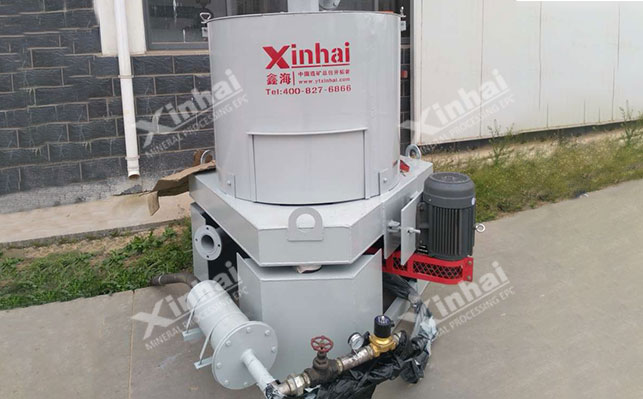
The centrifugal concentrator has a good effect on the gravity separation of -0.03mm fine silver minerals. The drum speed of the centrifugal concentrator is generally 800-1200r/min, and the slurry concentration is controlled at 15%-25%. In the centrifugal field, the sedimentation rate of silver mineral particles increases by 10-20 times, quickly adheres to the inner wall of the drum, and is discharged after flushing to form a concentrate. The processing capacity of this equipment can reach 1-3t/h, and the recovery rate of fine silver minerals is 15%-20% higher than that of traditional gravity separation equipment.
The moisture content of gravity separation concentrate is usually 30%-50%, and it needs to be concentrated and filtered to achieve dehydration. In the concentration stage, a high-efficiency thickener is used. By adding flocculants (polyacrylamide, dosage 5-15g/t), solid particles are quickly settled, and the bottom flow concentration can reach 50%-65%. The filtration equipment can choose a vacuum filter or a chamber filter press. The vacuum filter uses negative pressure to achieve solid-liquid separation, and the moisture content of the filter cake can be reduced to 15%-20%; the chamber filter press can further reduce the moisture content of the filter cake to 10%-12% through high-pressure pressing, which meets the requirements of silver concentrate smelting.
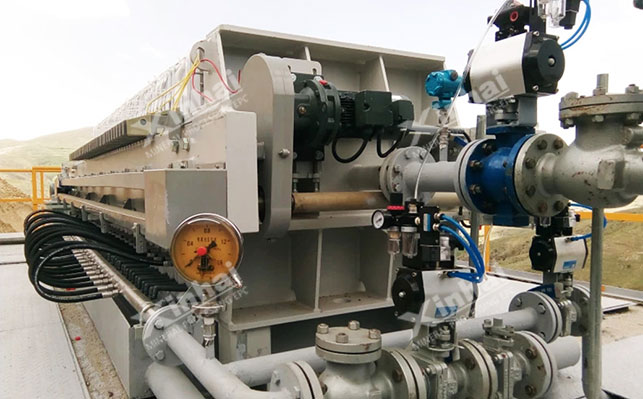
The moisture content of tailings is generally 20%-30%, and stabilization treatment is required. Generally, the tailings containing heavy metals are gradually dehydrated through various dehydration equipment to make their water content meet the standard, and then lime, sodium sulfide and other agents are added to neutralize and solidify the heavy metals. When the tailings are finally dry piled or filled in the goaf, the compaction density must reach 1.6-1.8t/m³ to prevent secondary pollution.
The above is an introduction to the process flow of silver ore gravity separation. In the actual beneficiation plant, how to select silver ore needs to consider many factors such as ore properties, ore grade, beneficiation plant scale, product quality requirements, environmental protection requirements and economic benefits, and then select the appropriate process through experimental research and technical and economic comparison.
Xinhai Mining has rich experience in silver ore beneficiation, and can conduct silver ore beneficiation tests, silver ore beneficiation process design, and provide complete sets of beneficiation equipment and later beneficiation plant operation management services. Xinhai has completed many silver ore dressing projects:
Myanmar 300tpd silver ore dressing project
The process flow designed by Xinhai for it: two-stage one-closed-circuit crushing process-one-stage closed-circuit grinding and classification-gravity separation-one-rough three-sweeping three-fine flotation-fine tailings dehydration process.
Morocco 500t/d silver ore beneficiation project
The process flow designed by Xinhai for this project through experimental analysis is: two-stage semi-closed circuit crushing and screening-two-stage closed circuit grinding-one roughing, three sweeping, two fine flotation-five-stage washing-zinc powder replacement smelting-tailings dry discharge process flow.
Inner Mongolia 1200t/d wet manganese leaching silver ore dressing project
The Inner Mongolia silver-manganese ore project undertaken by Xinhai has a design scale of 1200t/d, and the main beneficiation products are silver concentrate and manganese concentrate. According to the ore properties of the mine, Xinhai Mining has customized a full wet manganese leaching and silver leaching process for it through mineral processing tests. The process is: three-stage one-closed-circuit crushing and screening-two-stage closed-circuit grinding-SO2 leaching manganese-cyanide leaching silver full wet process flow.
Inner Mongolia Zhuhe 5000t/d silver polymetallic ore beneficiation project
The mineral composition of the Inner Mongolia silver polymetallic ore is complex. The gold-containing minerals are silver-gold ore, and the silver-containing minerals are mainly argentite, native silver, arsenic-sulfur copper-silver ore. It also contains other metals and gangue ores. Xinhai designed the following process flow for this silver mine through experimental analysis: two-stage continuous grinding-flotation-comprehensive concentrate re-grinding-second leaching and second washing-zinc powder replacement process flow.